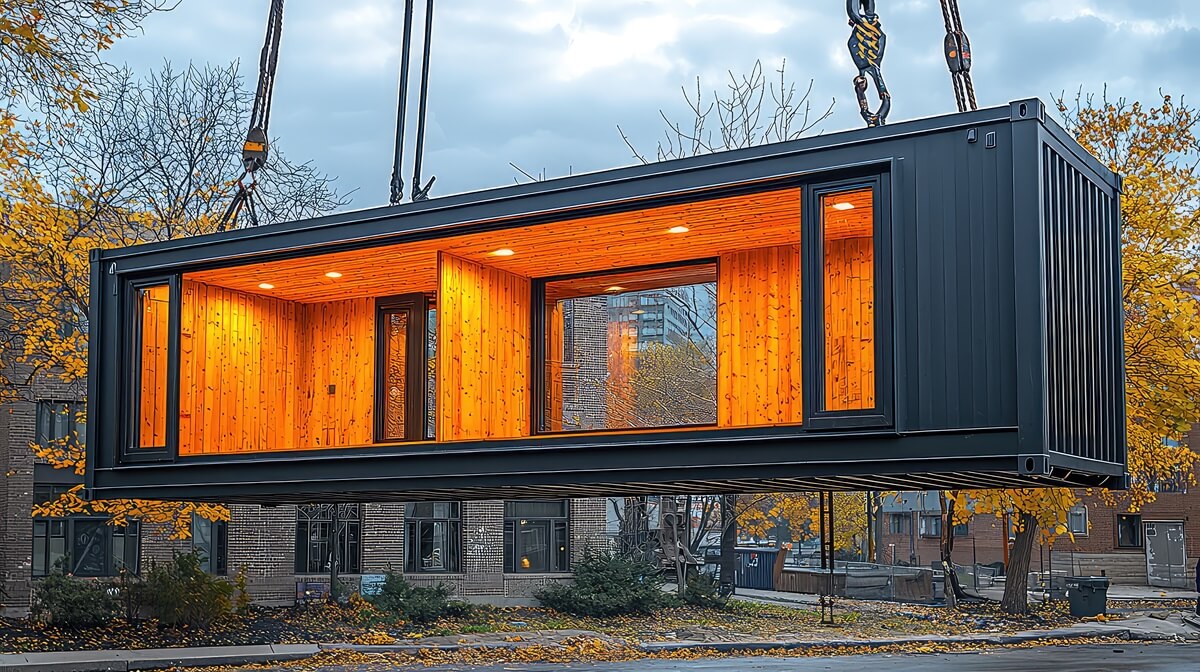The Difference Between Shipping Containers vs Modular Container Buildings

Explore the versatile world of modular container buildings and shipping containers. In this article, we’ll look at their standout features, current uses, and tips for picking the right option for your needs.
Understanding the Basics: Shipping Containers vs Modular Container Buildings
To understand the differences between container types, it helps to first know how shipping containers and modular container buildings vary. Shipping containers are robust metal structures originally designed for transporting goods across oceans. Their durability and availability have made them a popular choice for repurposing into various applications. On the other hand, modular container buildings are pre-fabricated structures often constructed off-site and assembled on location, designed specifically for customizable living or working spaces. These modular units are created with versatility in mind, allowing for a range of configurations and adaptations to suit different needs.
In terms of design characteristics, shipping units are standardised in size and shape, which offers uniformity but can limit design flexibility. In contrast, modular container buildings provide greater customisation options, as they can be tailored to specific dimensions and requirements. Typical uses for shipping containers include storage, temporary offices, and even makeshift homes. Meanwhile, modular building block find application in more permanent settings, such as residential complexes, schools, and retail spaces. Grasping these key differences is essential when looking at modular containers vs shipping containers and the unique advantages each offers for modern construction and design.
Structural and Functional Comparisons
When comparing modular and shipping options, it’s important to look at their design and how they function, as these are the main things that set them apart. Shipping containers, with their steel construction, are inherently strong and secure, ideal for transporting goods under extreme conditions. However, when repurposed for other uses, these units often require significant modifications, including cutting and reinforcing, to effectively serve as living or working spaces. Conversely, modular construction involves purpose-built units designed from the outset to meet specific functional requirements. These units can incorporate advanced construction techniques and materials that enhance their overall strength and utility, providing a tailored solution that shipping containers can’t always match.
One major difference between modular construction vs repurposed shipping is how well each handles insulation and adapts to different climates. Standard transport containers are not insulated, necessitating additional work to make them comfortable and energy-efficient in varied climates. Modular unit buildings, however, are often designed with integrated insulation and climate control solutions, ensuring year-round comfort and functionality. Additionally, modular structures offer greater flexibility in design, allowing for various layout configurations that can easily adapt to changes in use or location, something not as readily achievable with standard shipping containers. This adaptability, combined with their inherent design efficiency, makes modular container buildings a compelling choice for projects requiring bespoke solutions and longer-term installations.
Benefits and Challenges of Modular Container Buildings
The question of why to choose a modular container often arises when considering innovative building solutions. One of the primary benefits of modular structures is their high level of customisation. These units can be tailored to meet specific aesthetic and functional requirements, providing flexibility that traditional constructions or even repurposed shipping containers may not offer. They can be designed to incorporate various features such as modern insulation, energy-efficient systems, and advanced architectural elements, making them not only versatile but also sustainable. The efficiency of modular construction is another significant advantage; with much of the building process occurring off-site, project timelines can be significantly reduced, leading to cost savings and less environmental disruption.
Despite these advantages, there are challenges associated with modular container buildings. Cost can be a consideration, as the initial investment in bespoke designs and high-quality materials may exceed that of repurposing shipping containers. Additionally, regulatory hurdles may arise, as building codes and zoning laws can vary widely and may not always accommodate modular structures. This aspect of modular construction vs repurposed shipping highlights the need for careful planning and consultation with local authorities to ensure compliance. For those seeking a sustainable and customisable building solution, the benefits of modular container buildings often outweigh these challenges, offering an advanced approach to modern construction needs.
Choosing the Right Option for Your Project
Deciding between modular containers vs shipping containers for a project requires careful consideration of a few key factors. Budget is often a primary concern; shipping containers can serve as an affordable solution if the project demands a straightforward conversion with minimal modifications. However, if the project requires extensive alterations to accommodate insulation, plumbing, or wiring, the costs can escalate quickly. On the other hand, while modular container buildings may involve a higher initial investment, they offer long-term savings through energy saving and reduced maintenance costs, often making them a wise choice for sustainable, long-term applications.
Another crucial factor is the intended use of the structure. If the goal is to create a permanent or semi-permanent space with specific design needs, the adaptability and customisation of modular container buildings may prove advantageous. The question of why to choose a modular container is especially important for projects like residential housing, office spaces, or commercial developments. Site-specific factors, such as local climate and zoning regulations, also play a big role in the decision. Shipping containers, with their sturdy construction, are often better suited for temporary or mobile setups, while modular containers can be customised to meet specific rules and environmental needs. Considering these aspects helps project planners make informed choices that fit their goals, budget, and location.